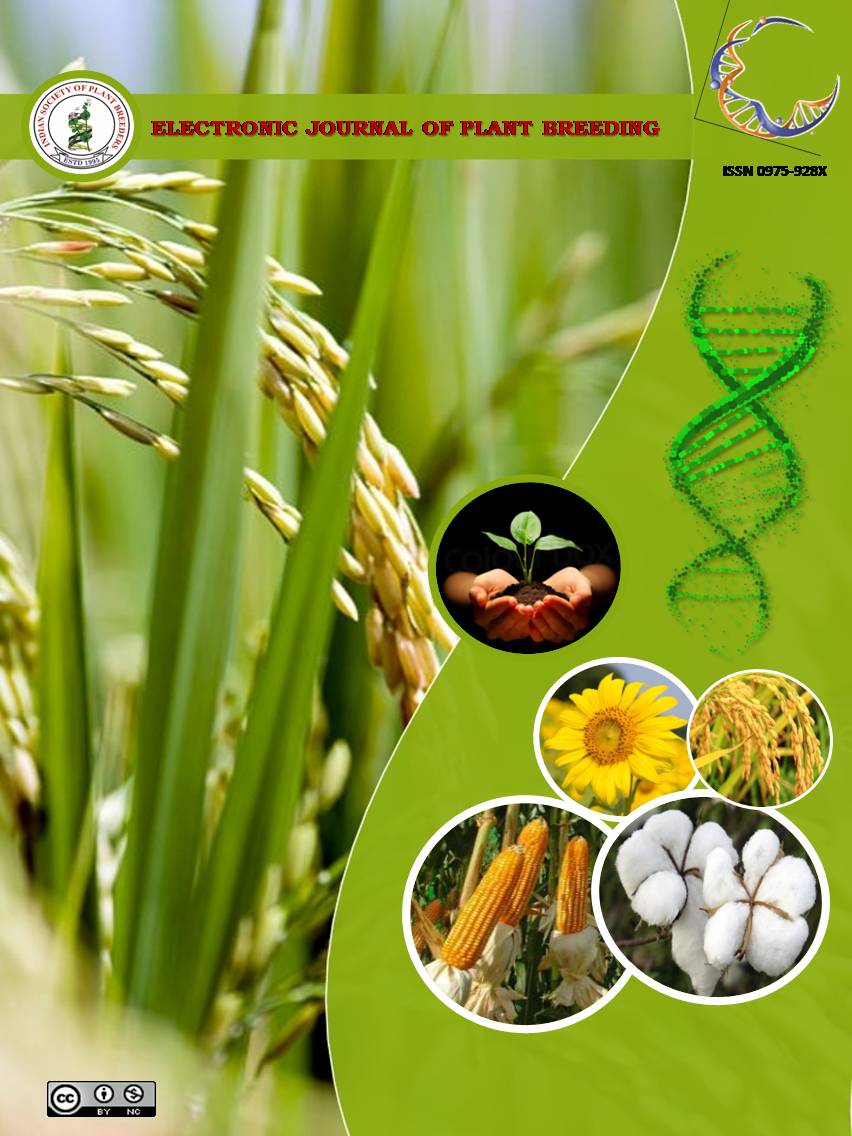Assessment of genetic variability, heritability and genetic advance in soybean genotypes
Abstract
Forty soybean genotypes were evaluated for two consecutive years kharif 2018 and 2019 to determine genetic variability, heritability (h2) and genetic advance (GA) for yield and other yield attributing traits. The pooled analysis of variance revealed significant variation among year and treatment for all characters studied. The interaction of year x treatment also showed a significant difference for most of the traits. RVSM2011-35 recorded the highest mean performance of seed yield/plant and a high value of oil content over the two years indicating that the genotype was found to be promising and could be recommended for Assam. In the case of oil content, NRC 148 showed the highest mean value and also a high value of mean seed yield/ plant over the two years. Range estimation showed wide values for most of the traits except plant height, the number of branches and pods/plant in comparison with the check. The estimates of phenotypic (PCV) and genotypic (GCV) coefficient of variation indicated that the values of PCV were slightly higher than GCV. The highest values of GCV and PCV were observed for seed yield/plant, the number of seeds/pod and oil content. Higher values of heritability (h2) coupled with high genetic advance (GA) were recorded for seed yield/plant, the number of seeds/pod, oil content, the number of branches, days to 50% flowering, plant height, the number of pods/plant, and 100 seed weight, suggesting that these characters could easily be modified or improved through simple selection.

